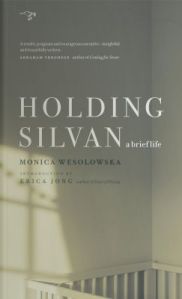It’s the season of waiting at church, the Christian season of Advent, the four weeks leading up to Christmas. For those of us who put up our trees on the 23rd or 24th and leave them through Twelfth Night, waiting has about it a sweet, welcome reprieve from the hustle of the season. In face of the lights and the piped-in carols (which I can get into as much as anyone, in the right mood), we tell ourselves that we’re marking the season right. We’re waiting.
But not for too long. This is active waiting, after all. We don’t want to be caught like the bridesmaids without oil for their lamps. For several weeks, even before the church calendar clicked over into Advent, the appointed Sunday readings have been concerned—even preoccupied—with waiting, with anticipation, with preparation, with anxiety over what, exactly, we’re waiting for. And when.
Now I’m conflating here—mixing Advent, with its turning toward Christmas and the birth of the baby in the manger, with eschatology. But I’m conflating because the lectionary has led me to do so, with its selection of readings for the last few weeks of “ordinary time”—the half-year since Pentecost, the season before Advent. Just how does this week’s selection—John the Baptist’s call for repentance—fit with the previous weeks’ narrative of Jesus’ talk about the destruction of the temple and coming disaster?
Not chronologically, that’s for sure. Advent marks the beginning of the church year, so we’re back at the baby, back at the baptizer’s call to repent. Makes sense. But in terms of waiting, at least, and preparing a way for the Lord, John’s words seem to herald not only the birth of the Christ child but that grown-up child’s words about what will follow later.
Back in November’s readings, Jesus responded to the disciples’ anxious questions about when, exactly, the destruction he predicted (“not one stone will be left on another,” Luke 21:6) would happen. He didn’t respond the way they wanted, by telling them a specific date or sign. Rather, he gave them something more complex. He warned them to watch out for false prophets (remember all those Y2K scares?) and for earthquakes, famine, and nation rising against nation, and kingdom against kingdom (Luke 21:10). Before all that will happen, though, he tells them that they will experience persecution and adversity and betrayal.
Then, a week ago, as we turned the corner into Advent and a new church year, into beginning all over again, Jesus was still answering the “when?” question (Matt. 24: 36-44). This time, by comparing the coming of the Son of man to the coming of the Flood, which “took them all away” as they were “eating and drinking, marrying and giving in marriage.” Very rapture-esque: “two will be in the field; one will be taken and one will be left.” Stay on your toes, in other words. After all, the man wouldn’t have had his house broken into if he’d known the time of the break-in.
So, why—if you’re still reading—is this blog, never particularly heavy with scriptural references, addressing the end times and the Advent season? Maybe because I’ve become (slightly more) comfortable going public with writing about messy faith. Maybe because this stuff fascinates me, and in the solipsistic blogsphere, I can write as much as I want.
But I think the real reason—at least the one that came to me first—is that I’ve been revising my novel, sneaking up on a scene I need to write, a scene I’ve been avoiding, a scene I can’t avoid much longer. “Bear fruit worthy of repentance,” John the Baptist tells the Pharisees and Sadducees as they approach. Counting on Abraham as your ancestor won’t cut it. Calling yourself a novelist doesn’t cut it. I’ve got to write that scene, and make it cry out.
Bear fruit worthy of repentance.
What does this mean, should this mean, can this mean, for a writer?
For me, some hesitation at the implied connection. Is it dangerous to imply that writing can have about it something of repentance, something of grace? Or, rather, to claim that it doesn’t?
Every year since 2002, I’ve spent part of Advent on a silent retreat. Twenty-four hours a day, for up to six days, of silence. Complete silence. At first, it took getting used to, especially at meals.
I’ve never brought my writing with me. It’s a retreat, remember? And writing is work. Instead, I’ve brought along books, knitting, Christmas cards to write and address, my bicycle and hiking boots. Last year, I spent the most memorable afternoon of my four days sitting in a chair watching the light move across Fitch Mountain as a hummingbird busied itself in the bushes.
This year, though, I’m considering bringing some work. I’m excited at the idea of waking at 7 to write for an hour before walking to the Refectory to eat delicious oatmeal that someone else has prepared. I’m thinking that, this year, my preparing the way for the Lord might just happen on the page.
And I’m scared, too, nervous that this line of thinking is too self-serving, too indulgent, that waiting should have more of the hair shirt about it.
Hold on. Writing worthy fruit is the hardest thing I know. I can’t be like the Pharisees and Sadducees, or the bridesmaids who run out of oil. I need to make sacrifices, to kill my darlings. It might not be what the writers of Matthew and Luke had in mind when they cautioned readers to “Keep awake,” but it might mark a start. I can’t wait.



